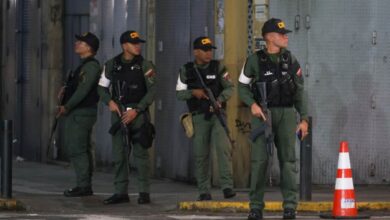New outbreaks of coronavirus after reduced restrictions
As the United Kingdom begins to plan their return to normality, there is a new outbreak of infections in countries that have already done so

The emergence of new cases of COVID-19 after miscarriage worries cities seeking to return to normal. / Photo: Rawpixel
LatinamericanPost| Juliana Suárez
Listen to this article
Leer en español: Nuevos brotes de coronavirus tras desconfinamiento
Countries in Europe and Asia have started to return to normal life with certain distancing protocols for a couple of weeks. They have gradually started to open non-essential stores and even some shopping centers in the world have started to operate. This, however, was not enough to prevent the virus from spreading again.
The world's health authorities have warned that regrowth is a latent danger and would affect once again the production and normality of the countries. Germany, China, and Iran are some of the countries that experienced the retaliation of the coronavirus from the beginning and today they began to normalize life. However, with just a few days of normalization, the number of infections increased again.
In Germany, this normalization had begun with the reopening of stores, the return to classes of schools, the soccer league, bookstores, and hairdressing salons, among others. Just a week after opening many of these, the cases began to reactivate and they went from having around 500 infections a day to more than a thousand. This has determined that the number of reproduction or R0, a way to measure the spread, is now above one in the European country. According to the Robert Koch Institute, although the number constantly changes by different variables, the number of people a confirmed patient comes to infect is greater than one.
The case of Iran is similar, after having its peak of infections in late March, all the confinement in April allowed to flatten the curve and go from having 3300 to 1200 infections per day, and even less in some days. However, since the restrictions began to be relaxed, citizens began to go outside more and even to bypass the remaining restrictions, which led to crowds in public places. Among the government's decisions was to open shops to reactivate the economy, which is why many people made purchases again and that is the new focus of contagion.
Also read Covid-19: countries begin to ease restrictions
Likewise, Wuhan, the Chinese province where the virus started again reported a case of contagion after a month of not having it. In this part of the country things returned to normal more than a month ago, while in the Americas the situation was only beginning to worsen. During the reopening of Wuhan, contagions brought from abroad began to be seen again, implying the danger of reopening the flights. According to Forbes, the city “registered new confirmed cases, all of them in the same residential complex. One corresponds to an 89-year-old woman who the previous day had been reported as the first case in the city in more than a month . ”
This implies a new risk in the city and throughout the country, which since last week began to reactivate its normal life and began face-to-face classes, the opening of shops and even Disneyland Shanghai opened its doors.
These new outbreaks pose a danger to the world as there is still no near possibility of immunizing the population, since the most advanced efforts point to a vaccine in 2021, which would not imply the ability to prevent the population from contagion. According to health authorities, this outbreak due to the change in restrictions could lead to a new peak of infections for the next half of the year. As it progresses, countries will have to determine whether the measures should be tightened again.
While this is happening in some places where restrictions have already been eased, other countries begin their plans to do so in the coming weeks.
The United Kingdom, for example, is today the third country with the most infections, after the United States and Spain and the second with the most deaths, and is already planning to return to the streets. Despite the fact that last week this country had one of its highest spikes, its Prime Minister, who also had the virus, announced a progressive reduction of restrictions since next month. Schools and businesses will start in June, and Boris Johnson has also warned that some workers should go to work if their jobs don't allow them to do their jobs from home. Unions have opposed this, assuring that they will not work if security is not guaranteed.
Also read: New world's best practice for COVID 19 prevention and control
Like the United Kingdom, highly affected countries such as the United States also plan to start activities during the month of May and / or June. Italy, Spain, and France started the same process a few days ago and are waiting for the less restrictive measures not to allow a re-emergence in the cities.
In Latin America, Mexico and Colombia are some of the countries that are already planning the reopening, while others such as Chile and Peru continue to tighten their restrictions due to the spikes they are having.




